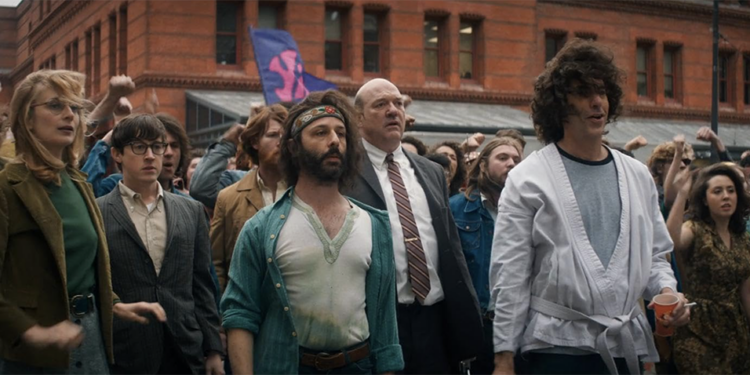Connor Loyd is a movie critic for the Samford Crimson. The views expressed in this opinion article do not necessarily reflect the views of the Samford Crimson or Samford University.
Aaron Sorkin is one of those names that always seems to come up when talking about the topic of screenwriting. Although he spent many years as a playwright before completing his first screenplay, his scripts- particularly the dialogue within them- are instantly recognizable simply by the cadence and rhythm with which they’re constructed. This style, for which he has become so well-known, is divisive for some who criticize the dialogue’s lack of realism and how each character speaks the same way. Personally, I like it; while one could argue that no one in real life would talk the way a Sorkin character does, the same can be said about characters written by Shakespeare, and no one ever seems to have an issue with that. As long as you buy into the fact that this is a story being told and not necessarily a one-to-one mirror of reality, the heightened dialogue found in Sorkin’s films can be quite enjoyable. “The Trial of the Chicago 7” is an excellent place to get examples of both the very best and worst Sorkin’s writing has to offer.
“The Trial of the Chicago 7” is, as you might imagine, a film centering on the well-known federal court trial of seven anti-Vietnam War protestors accused of inciting riots in Chicago in the summer of 1968.
Before getting into characters and dialogue, attention must be paid to this film’s excellent story structure. The movie’s introductory montage is phenomenal, expertly and succinctly setting up the viewpoints of the main characters as they ready themselves for the protests set to take place around the Democratic National Convention in Chicago. You immediately understand both the (in some cases starkly opposing) stances of the major characters you’ll be following throughout the story, as well as the state of the country at the time the riots took place.
But while the film may begin in the days before the infamous Chicago riots of 1968, the film is primarily set during the drawn-out trial that occurred around a year after the riots themselves. Throughout the legal proceedings, we slowly uncover the events that led up to the violence and arrests that sparked the massive legal battle in the first place.
Then there are the characters. As previously mentioned, the main two critiques lobbed at Sorkin is the general similarities with which all his characters speak and the lack of realism in his often-exaggerated dialogue.
The former does not seem to be much of a problem in this film. While it’s true all the characters have a similar cadence and natural aptitude for one-liners, it’s not their speaking patterns which separate them but what it is they’re saying. The dynamic between Thomas Hayden and Abbie Hoffman, for example, is very clear and well-executed. Both characters seem to be representative of two opposing approaches to anti-Vietnam protesting and liberal politics at the time. Hayden keeps his look professional, conveys respect to those in authority and aims for civility, while Hoffman opts instead to use humor and media stunts in order to get people’s attention, making no attempt to hide his disdain for those in power. So while their speech patterns may sound similar, the characters themselves remain distinct.
As for the latter, the lack of realism in the dialogue can unfortunately take you out of the movie from time to time. It really does feel like a stage play, both for better and for worse, as some lines feel like they would work well on stage but end up falling short on camera. However, these problems are not enough to detract from the other strengths the movie has going for it. From the acting to the editing, the film is overall gives the audience a very enjoyable time.

Contributing Writer






